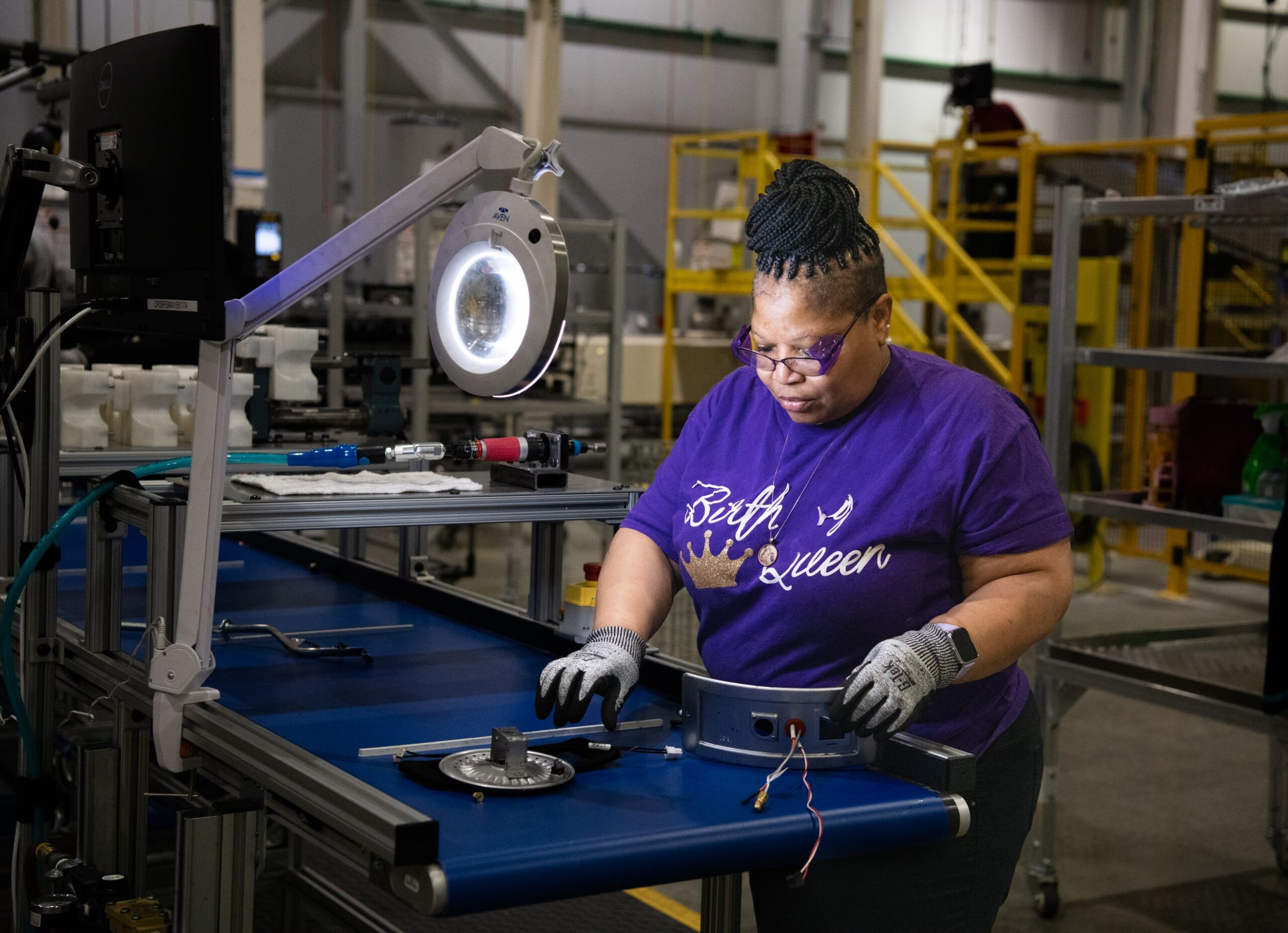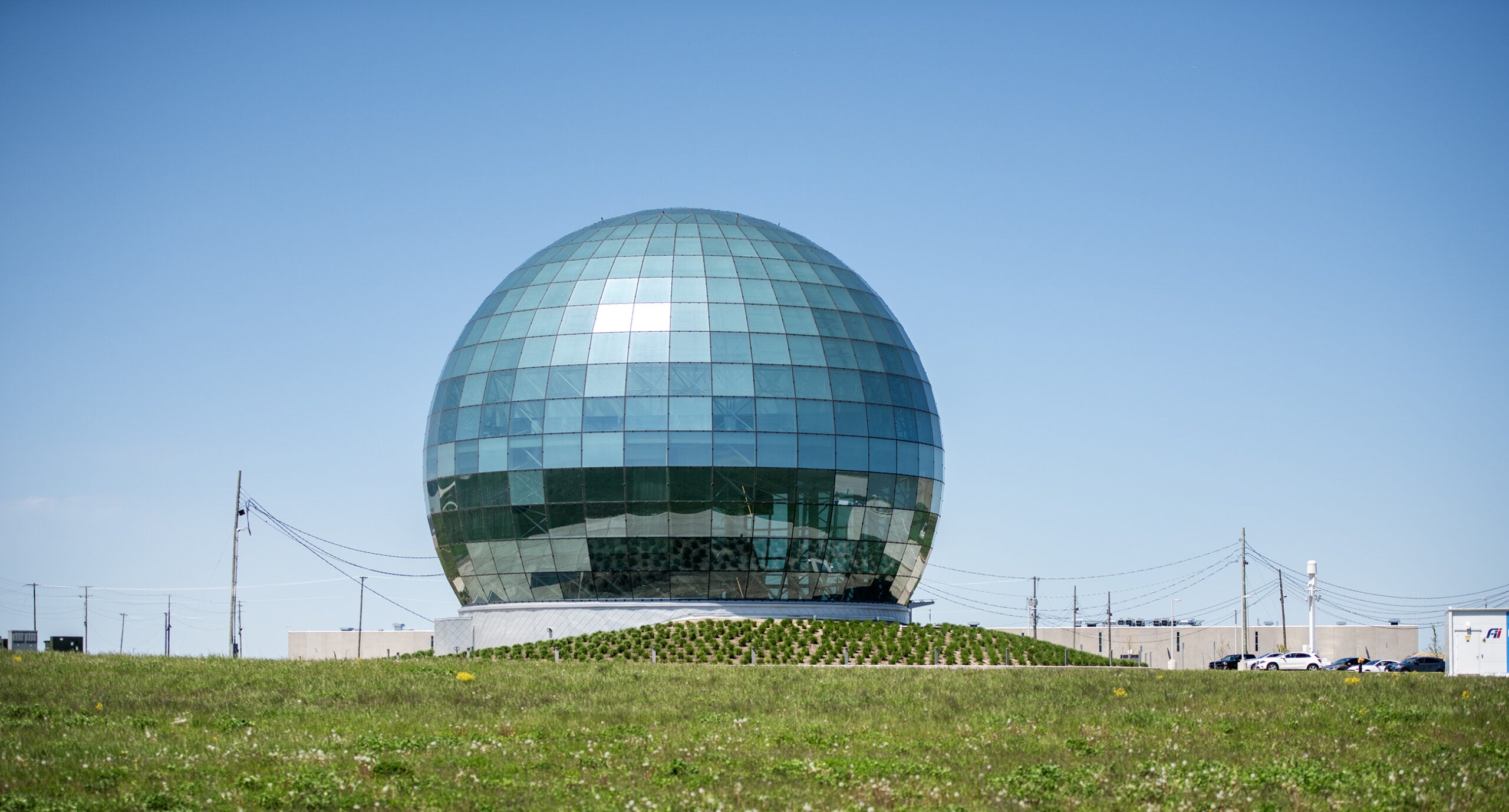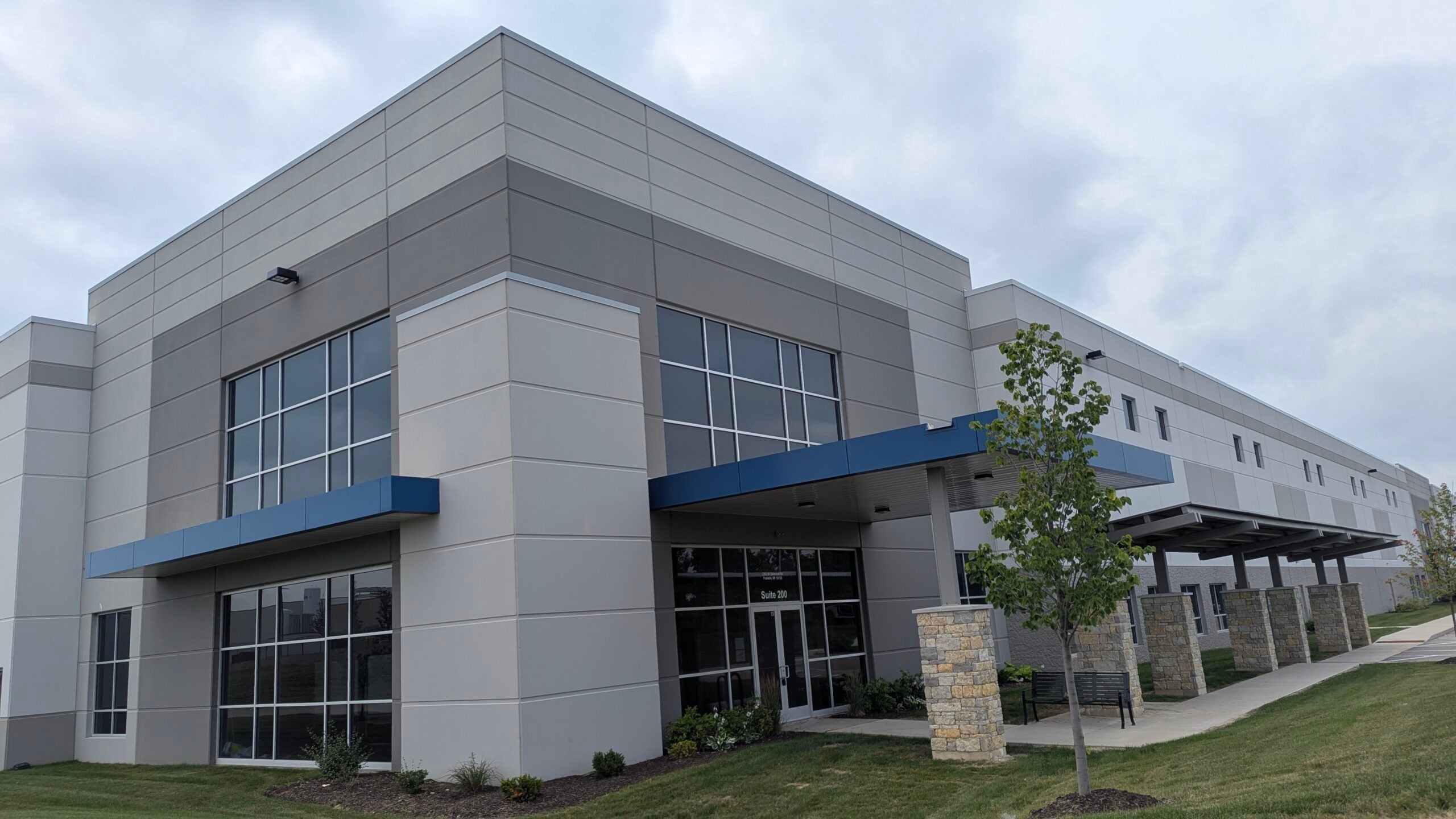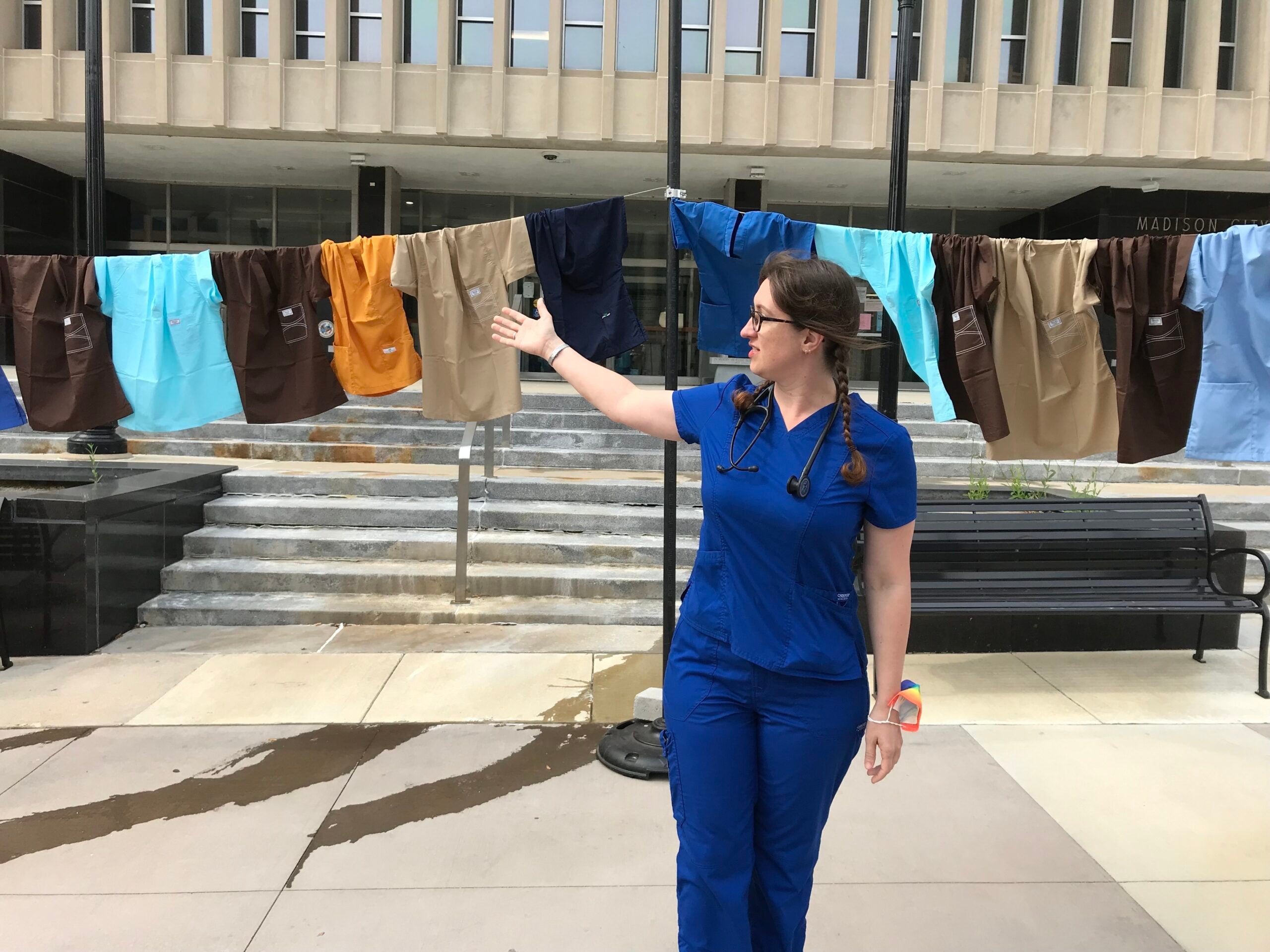Despite Wisconsin’s strong recovery from the COVID-19 pandemic, over half the state’s counties had fewer jobs last year than in 2019. Some sectors, like manufacturing, also lost jobs over the same period.
That’s according to a Wisconsin Policy Forum report released Friday, which analyzed newly-released data from the U.S. Bureau of Labor Statistics to examine changes in jobs by county and industry from 2019 to 2023.
While Wisconsin set a new record-high for total jobs last year and the unemployment rate remained near record lows, 42 of the state’s 72 counties averaged fewer jobs in 2023 than they did in 2019, the report said.
News with a little more humanity
WPR’s “Wisconsin Today” newsletter keeps you connected to the state you love without feeling overwhelmed. No paywall. No agenda. No corporate filter.
“It’s somewhat a mixed picture,” said Joe Peterangelo, a researcher at the forum and the report’s author. “Overall, it’s a lot of positives, but certainly that’s not a consistent story depending on who you are and where you live.”
One bright spot is that wages, on average, outpaced inflation between 2019 and 2023, the report said. Average wages per employee rose by 21.1 percent in Wisconsin, while inflation was 19.2 percent during that period.
Pandemic recovery uneven across counties
The counties that added jobs at the fastest rates between 2019 and 2023 were Lafayette, Calumet, Kenosha, Pepin and Chippewa counties, according to the report. Dane and Kenosha counties, meanwhile, added the most total jobs during that period at 8,819 and 5,698, respectively.
Peterangelo said the five counties that had the fastest job growth were a mix of rural and urban counties, including some in the western part of the state near the Twin Cities and Kenosha, near Chicago.
“We’ve been seeing population growth in that western part of the state, close to the Twin Cities, and maybe that’s now starting to drive some more employment growth over there,” he said. “Down in Kenosha, there’s been quite a bit of development along the interstate, so more jobs have been created along that corridor.”
The five counties that lost jobs at the fastest rate from 2019 to 2023 were Jackson, Trempealeau, Crawford, Lincoln and Florence, the report said. But Milwaukee County lost the most total jobs in that period at 19,140, followed by Brown and Wood counties, both losing more than 2,000 jobs.
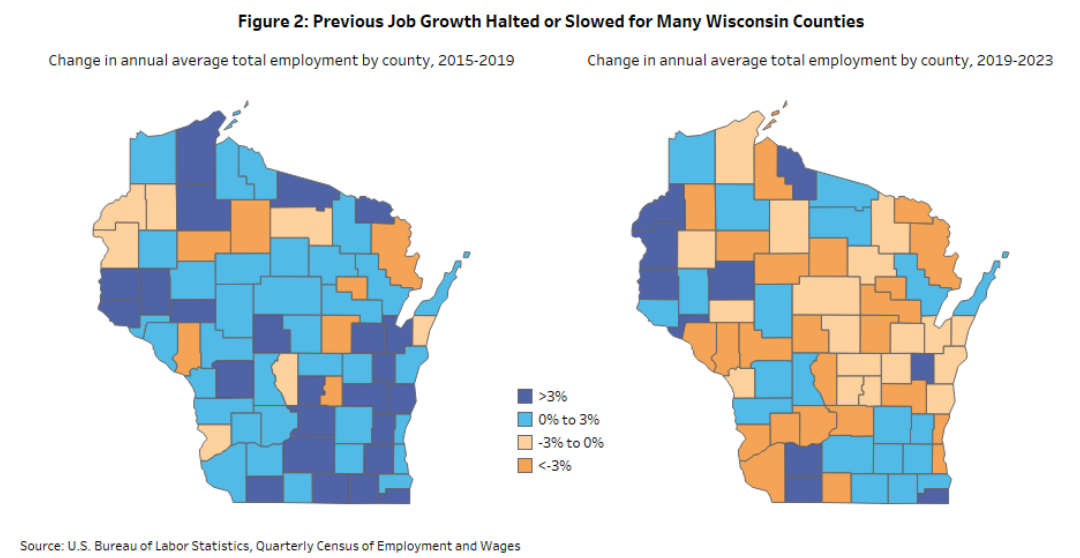
Peterangelo said the five counties that lost jobs at the fastest rate tended to be more rural, but it’s hard to pinpoint exactly why some counties saw job growth and others saw losses.
“Our working age population statewide has plateaued, so, in a number of communities, that is an issue that can limit employment numbers,” he said. “But it’s not necessarily the main factor everywhere.”
For example, both Milwaukee and Kenosha counties saw declines in their working-age population — workers aged 15 to 64 — between 2019 and 2023, the report said. Milwaukee County’s working age population declined by 3.9 percent, while Kenosha’s fell by 2.4 percent.
Kenosha County’s job totals were aided by workers commuting to the county. It has a higher share of workers commuting to it than many others in the state, the report said.
“It’s one of those counties kind of on the edge of the Chicago metro area, so there are people coming in and out,” Peterangelo said. “That can be part of what’s helping to fill those jobs, even though the population there isn’t increasing.”
Jobs in construction up, manufacturing down
The three economic sectors that added the most jobs between 2019 and 2023 included construction; professional, scientific and technical services; and transportation and warehousing, according to the report. All three added more than 11,000 jobs.
Peterangelo said efforts to address the state’s housing shortage may have contributed to the bump in construction jobs. In fact, the Wisconsin Builders Association reported housing construction increased in 2023 after two years of declines.
“Housing development has increased in many parts of the state to some extent,” he said. “We know that the pace of housing construction is still not sufficient to address the affordable housing challenges that we have.”
He also said construction on roads and other public infrastructure was another factor that led to more jobs.
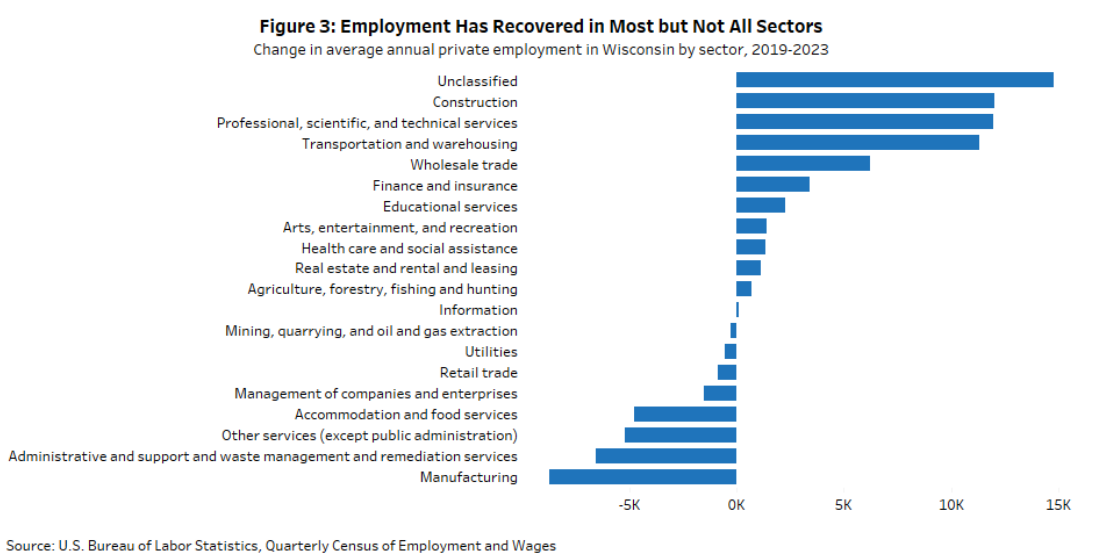
In the transportation and warehousing sector, the report said much of the growth was concentrated in three counties: Kenosha, Milwaukee and Dane, each of which has an Amazon distribution center.
“Those three counties accounted for growth of about 6,000 jobs and that was more than half of the increase in that sector statewide,” he said. “We think that those distribution centers and fulfillment centers are playing a big role.”’
The state’s manufacturing sector lost the most jobs between 2019 and 2023, down by 8,759, according to the report.
Peterangelo said that’s concerning because the manufacturing sector accounts for 18.6 percent of total private sector jobs in Wisconsin, almost double the national share of 9.8 percent.
Those job declines could be attributed to declines in manufacturing sub-sectors, like printing and paper manufacturing, which lost a combined 7,270 jobs, according to the report.
While manufacturing does play an outsized role in Wisconsin’s economy, Peterangelo said the state seeing low unemployment and record jobs even as that industry has shed positions shows that Wisconsin’s economy is getting more diversified.
“The fact that we’ve had some losses in sectors like manufacturing, but we’ve had some growth in some of the other higher wage occupations and sectors could be benefiting the state in terms of making it more resilient in the face of future economic downturns,” he said.
Wisconsin Public Radio, © Copyright 2025, Board of Regents of the University of Wisconsin System and Wisconsin Educational Communications Board.

